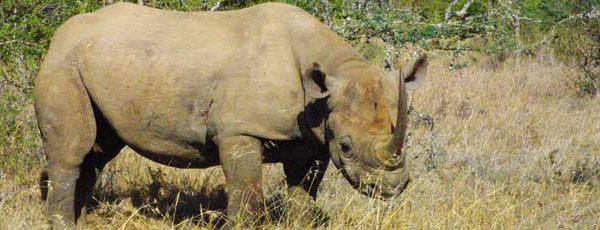Saving Kenya’s Black Rhinos
- Nairobi, Kenya
- Volunteer Vacations

| from $3,095* per person | 15 Days | February, June-October |
| Simple accommodations | Exertion level: 6 | |
| Operator: Earthwatch Institute | 10 people max | |
Loading map, please wait...
Locations visited/nearby
, herbivores , elephants , giraffes , earthwatch , ecotourism , scientific research , wildlife surveys , wildlife protection , Saving Sweetwater's Rhinos , savannah endangered species , Kenya
0 testimonials about this trip.
1 testimonial about the provider, Earthwatch Institute:
-
Reviewer: L. Reifschneider
located in
St. Louis,
MO
USA
Elephant conservation is what drives my travel destinations. However, I always come home counting the blessings of new friends and an understanding of a culture and way of life I possibly would otherwise have never been introduced to. Through the Earthwatch projects I participate in, I am learning just how big and wonderful this world is.
Itinerary
On the ExpeditionHelp bring black rhinos back from the brink of extinction.
Working in a classic African savannah landscape, your activities will focus on gathering data on the distribution of wildlife and rhinos. You will also measure the composition and condition of the vegetation that competing large herbivores eat, namely rhinos, elephants and giraffes. Some trekking over uneven terrain on the equator can be demanding, but well rewarded by abundant wildlife, including lions, leopards, zebras, buffalo, impala, baboons, hippos, and many other species, including 232 kinds of birds. One day will be spent with the neighboring communities and seeing firsthand how benefits from wildlife conservation have been used to improve livelihoods of people bordering the Ol Pejeta Conservancy. An adjacent chimpanzee reserve is worth a visit in your recreational time.
Meals and Accommodations
After hot days in the field, you will return to the comfortable Research Center at the Ol Pejeta Conservancy, with an open veranda and a campfire for evening chats. An early rise also gives you the opportunity to enjoy the sunrise in the backdrop of the beauty of Mt. Kenya. The center offers single rooms (two doubles available for couples), either in the main building or in rondavels (traditional thatched huts), with potable water, electricity, toilets, and wood-fired warm showers. An excellent cook prepares all meals, including dinners of Nile perch, nyama choma (grilled meat), potatoes, vegetables, casseroles, and pasta, topped off with peerless Kenyan coffee and tea.
About the Research Area
The Research Center is located within the 46,000 hectare Ol Pejeta Conservancy and covers an area of 9,000 hectares, north of Nairobi near the town of Nanyuki on the Laikipia plateau. It lies between Mt. Kenya and the Aberdare Mountains. The Laikipia plateau is a lava plateau used almost entirely for cattle and sheep ranching. It is flat and rolls gently only where it is cut into by rivers such as the Ewaso Narok and Ewaso Ngiro, which flow down from the Aberdare Mountains. The latter flows north through the reserve and provides water year round, but it is supplemented by five earth dams.
More information from Earthwatch Institute:
- View trip on provider's website
earthwatch.org/expeditions… - Company profile, experience, and history
- View all of their trips
- Email this trip page to a friend
-



Comments from Facebook